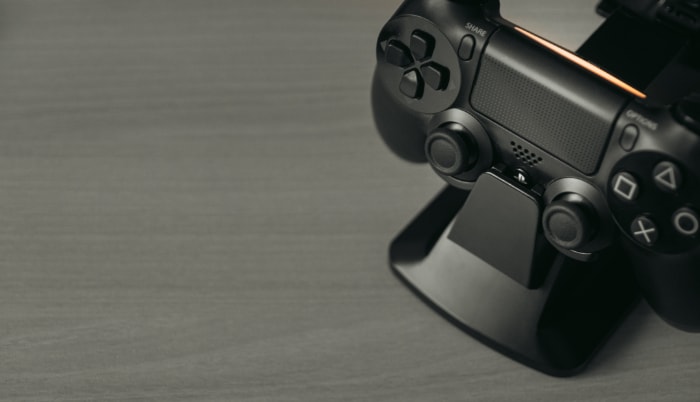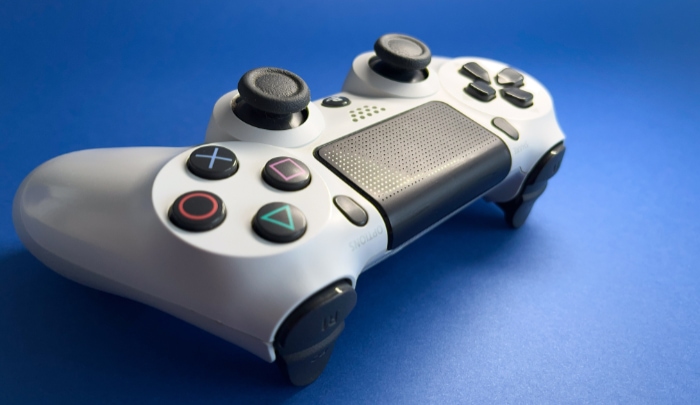Why Are PS4 Controllers So Expensive? Feature Breakdown

As avid gamers and tech enthusiasts, we often find ourselves pondering why certain gaming accessories come with a steep price tag. The PlayStation 4, known for its cutting-edge technology and expansive game library, is no exception.
Its controllers, particularly, have garnered attention for their relatively high cost. You may wonder, is this merely a result of clever branding, or is there more to the story?
Build Quality and Material
One of the foremost reasons for the higher cost of PS4 controllers is the exceptional build quality and the materials used in their construction. From the buttons to the grip, each component has been designed with durability and functionality in mind.
Types of Materials Used
The PS4 controller is primarily made of a high-quality plastic polymer that offers both strength and flexibility. In addition, the analog sticks are made from rubberized material for an enhanced grip, reducing the chance of slippage during intense gaming sessions.
Durability
It's not just the materials but also how they are put together that counts. The assembly is performed with great attention to detail, ensuring that each controller can withstand the rigors of daily use.
For instance, the buttons are designed to sustain millions of presses without failure.
Importance of Quality Components
High-quality components like triggers, bumpers, and joysticks contribute to the overall gaming experience. They are more responsive, which is crucial for time-sensitive actions in games.
More importantly, quality components are less likely to malfunction, making the controller a long-term investment.
Manufacturing Process
The meticulous manufacturing process also adds to the cost. The process involves several quality checks to ensure that each unit meets the set performance standards.
This rigorous testing ensures that you are investing in a durable product.
Impact on Gameplay
Good build quality and materials directly affect gameplay. A well-made controller offers more precise control, responsive buttons, and a comfortable grip, all of which are critical for a competitive edge in gaming.
By dissecting the build quality and materials used in PS4 controllers, it becomes clear that you are paying for a high-quality, durable product designed to enhance your gaming experience. The cost is not merely a reflection of a brand name but an investment in a device engineered for performance.
Ergonomic Design
Ergonomics is not merely an industry buzzword; it's a vital component that significantly influences both the cost and the value proposition of PS4 controllers. With an array of features meticulously engineered to offer comfort and ease of use, the ergonomic design is far from a cosmetic advantage—it’s an essential feature for improving gameplay.
The Science Behind Ergonomics
A considerable amount of research and development goes into designing a controller that fits comfortably in a wide range of hand sizes and shapes. By studying the natural posture and movement of human hands, designers are better equipped to create a device that minimizes strain and maximizes performance.
Grip and Contouring
The grip is not just a random design; it is the outcome of extensive research. The PS4 controller offers a comfortable grip, which not only reduces hand fatigue but also offers more stable control during long gaming sessions.
The contours of the controller fit naturally into the palms, aiding in better control and response.
Button Placement and Layout
The strategic placement of buttons, triggers, and joysticks on a PS4 controller serves a purpose beyond aesthetics. Each button is placed to offer easy accessibility while avoiding accidental presses, which is crucial in fast-paced or competitive games.
The layout is designed so that users can reach all essential controls without contorting their hands, reducing the risk of muscle strain or discomfort.
Weight Distribution
An often-overlooked factor in ergonomic design is the weight distribution of the controller. A balanced weight ensures that the device feels natural in your hands, improving control and minimizing fatigue.
PS4 controllers strike an excellent balance in weight distribution, which enhances the overall usability.
Extended Gaming Sessions
Ergonomic features are especially beneficial for those who engage in long gaming sessions. The reduced strain and increased comfort can actually make a noticeable difference in performance, making the investment in a well-designed controller more justifiable.
In summary, the ergonomic design of PS4 controllers is a culmination of extensive research and practical application. It significantly contributes to both the cost and the high performance of the device, making it a critical factor in the overall value that these controllers offer to gamers.
Built-in Speaker and Touchpad
While many controllers offer standard functionalities, PS4 controllers stand apart due to their unique features like the built-in speaker and touchpad. These elements not only add to the immersion and interactivity in games but also contribute to the device's overall cost.
The Built-in Speaker
The inclusion of a built-in speaker in the PS4 controller elevates the gaming experience by offering an additional audio layer. This feature allows for more localized sound, making gameplay more engaging.
For example, in certain games, you might hear your character's voice or sound effects coming directly from the controller, adding a layer of realism and immersion.
Technology Behind the Speaker
The speaker is not just a simple sound-emitting device; it’s designed to work seamlessly with the PS4’s audio systems. The technology used is advanced enough to offer clear sound without draining the controller’s battery life excessively.
This entails extra costs in design, testing, and manufacturing.
Touchpad Features
The touchpad on the PS4 controller serves multiple functions. It can be used as a button, a multi-touch surface, or even as a miniature drawing pad in certain games.
This offers a level of control and interaction that goes beyond the traditional buttons and triggers, opening new avenues for gameplay.
Technology Behind the Touchpad
Creating a touchpad that is responsive, durable, and capable of multi-touch requires a significant investment in technology. It needs to be integrated seamlessly with the existing button layout without hindering the ergonomic design, a task that requires careful engineering and therefore contributes to the overall cost.
Programming and Software Integration
Both the built-in speaker and touchpad require custom software to function optimally. This entails creating algorithms and programs that can manage these features effectively, in real-time, without causing performance issues.
The development of such specialized software adds another layer to the manufacturing cost.
Importance in Gameplay
The built-in speaker and touchpad are not just gimmicks; they offer practical applications in gameplay. For instance, the speaker can emit localized sounds that help players locate in-game objects, while the touchpad can facilitate more complex controls than buttons, improving gameplay mechanics and engagement.
By examining the intricacies of the built-in speaker and touchpad, it becomes evident that these features are not mere add-ons but carefully engineered components designed to enhance the gaming experience. Their inclusion justifies the premium price of PS4 controllers to a significant extent, offering a gameplay experience that is both advanced and immersive.
Advanced Haptic Feedback

Haptic feedback in PS4 controllers goes far beyond the simple vibrations of yesteryear's gaming devices. The feature is carefully engineered to offer a tactile experience that mimics real-world sensations, contributing not only to the immersive quality of games but also to the cost of the controller.
What Is Haptic Feedback?
Haptic feedback refers to the use of touch sensations to communicate with the user. In the context of PS4 controllers, this means creating a variety of tactile sensations that can simulate experiences like the recoil of a gun, the feeling of running on different terrains, or even the sensation of raindrops.
Technology Behind Haptic Feedback
The haptic technology in a PS4 controller is sophisticated, involving a range of actuators and motors programmed to simulate various physical experiences. Unlike traditional rumble technology, advanced haptic feedback can produce a wide array of tactile sensations, making the gaming experience much more realistic and engaging.
Programming for Realism
Ensuring that haptic feedback is both responsive and realistic requires intricate programming. This coding allows the haptic motors to react in real-time to the gaming environment, be it the texture of a road in a racing game or the impact of a weapon in a first-person shooter.
User Customization
Another dimension adding to the complexity and cost is the ability to customize haptic feedback. Players can often adjust the level and type of haptic sensations, which requires a flexible and complex programming architecture to support these customization options.
The Impact on User Experience
The advanced haptic feedback not only adds a new layer of realism to gaming but also provides cues that can aid in gameplay. For example, the varying levels of tension and resistance can guide a player's actions, offering subtle, tactile hints that can improve performance and engagement.
In essence, the advanced haptic feedback technology in PS4 controllers serves to heighten the sensory experience of gameplay. It's a feature that necessitates significant investment in both hardware and software, making it a significant factor in the controller's overall cost while substantially enriching the gaming experience.
Battery Life and Charging Mechanisms
Battery life and charging mechanisms are often underestimated factors that influence both the functionality and cost of PS4 controllers. With the emphasis on wireless technology, the power management systems of these controllers are designed for extended playtime while ensuring quick and efficient recharging.
Long-lasting Battery Life
One of the key features that set PS4 controllers apart is their extended battery life. Designed to last for several hours of continuous gameplay, these controllers use high-capacity lithium-ion batteries that are both durable and efficient.
The extended battery life means fewer interruptions, making for a smoother and more enjoyable gaming experience.
Advanced Power Management
The controller's battery life is optimized through a variety of power management features. For instance, auto-sleep functionality turns off the controller when it is not in use, conserving battery life.
These advanced power-saving features are the result of intensive research and development, adding to the cost of the device.
USB Charging and Compatibility
The charging mechanisms for PS4 controllers offer the convenience of being compatible with standard USB ports, allowing for a range of charging options. This is not just a plug-and-play feature; it involves complex circuitry to ensure that the battery can be safely and quickly charged from various power sources.
Charging Indicators
Subtle yet important, the LED indicators provide real-time information on the charging status and battery life. These indicators have to be precisely engineered and programmed to communicate effectively with the internal battery management system, ensuring that players can easily understand their controller's current power status.
Safety Mechanisms
Safety is a paramount consideration, particularly because lithium-ion batteries can be prone to issues like overheating. Built-in safety mechanisms such as overcharge protection ensure that the batteries have a long lifespan and do not pose safety risks, which involves additional testing and certification processes.
In summary, the battery life and charging mechanisms of PS4 controllers are sophisticated features designed to offer both convenience and performance. They are not mere afterthoughts, but critical elements that contribute to the cost of the device.
Their advanced design ensures that gamers can play for extended periods without worrying about battery drain or safety issues, thereby justifying the premium price tag.
Conclusion
Drawing together the multiple facets discussed, it's clear that the high cost of PS4 controllers is not arbitrary but rather a reflection of extensive research, sophisticated technology, and meticulous engineering. From the ergonomic design aimed at reducing muscle strain to the advanced haptic feedback that provides a realistic gaming experience, each feature is a vital component that adds value.
The inclusion of unique elements like a built-in speaker and touchpad enhances gameplay, while the advanced battery life and charging mechanisms offer both convenience and safety. All these factors collectively contribute to the premium price of the controller, making it an investment in a significantly improved gaming experience.


